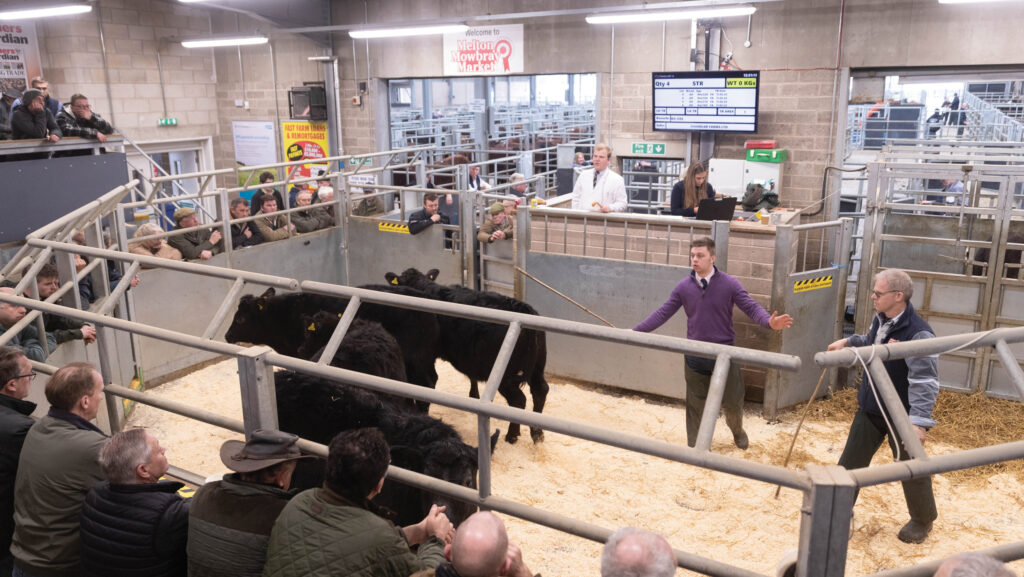Split market for store cattle as short-keep beasts in demand
 © Tim Scrivener
© Tim Scrivener Store cattle continue to meet a buoyant trade with buyers looking to fill their sheds for winter, but with a clear preference for shorter keep animals.
Composite data from the Livestock Auctioneers Association show that store values climbed steadily during September, with 18-month Continental steers – the most numerous offering – averaging £1,890 a head in the final week, £66 a head dearer than at the start of the month.
See also: Find our auction mart data in one place
It was a similar story for yearling Continental steers, which averaged £1,477 a head in the last week of September compared with £1,436 a head in the first week of the month.
The past week has seen a slight slowing of the trade, however, especially for longer-term stores that will require overwintering and perhaps another season on grass to reach finishing weight.
Yearling Continental steers, for example, dropped £38 in the week to 4 October to £1,462 a head, while yearling Hereford heifers were slightly back at £906 apiece.
“Short-keep cattle trade is still fairly good,” said Ted Ogden, sales manager at CCM Auctions at Skipton in North Yorkshire. “Dairy-bred bullocks and heifers of 21 months-plus are making a very sharp trade – anything with retail quality, suckler bred, is going well too.
“We’re at the stage now where feeder finishers are wanting to keep their sheds full for the Christmas trade,” he added.
“But anything that is coming from a dry summer, looking like it’s a bit cold and in need of warming up, they’re a shade easier.”
The market is being driven by the tight supply situation and firm prices for fat cattle.
Latest figures from the AHDB put steer slaughterings in the week ending 27 September at 16,684 head – some 1,672 head lower than 12 months ago.
The beef breeding herd was also down 3% in July, suggesting market tightness is here to stay for the medium term.
“Recent figures also suggest that EU beef production is down 8% in the first six months of the year,” Mr Ogden added.
Mixed picture
The mixed picture in the store trade is confirmed by Nick Cole of livestock trading group Meadow Quality, who described the trade as “very price-sensitive”.
“The single suckled stores – the eight- to 12-months stores – seem to be a fantastic trade,” he said. “The stronger 450kg stores, your shorter term finishing stores, are a good trade too – if anything they have slightly lifted again over the last couple of weeks.
“But your longer term store cattle, your 250kg to 350kg cattle – the ones that are going to have to be wintered and grazed next summer – they seem to be very sticky. Anything that is poor weight for age or poor conformation, they’re the ones that are in decline.”
Farmers were mindful that overwintering cattle would entail higher feed and bedding costs, he added, though the fact some people were getting an extra cut of silage and a few weeks’ extra grazing could ease the pressure a bit.
